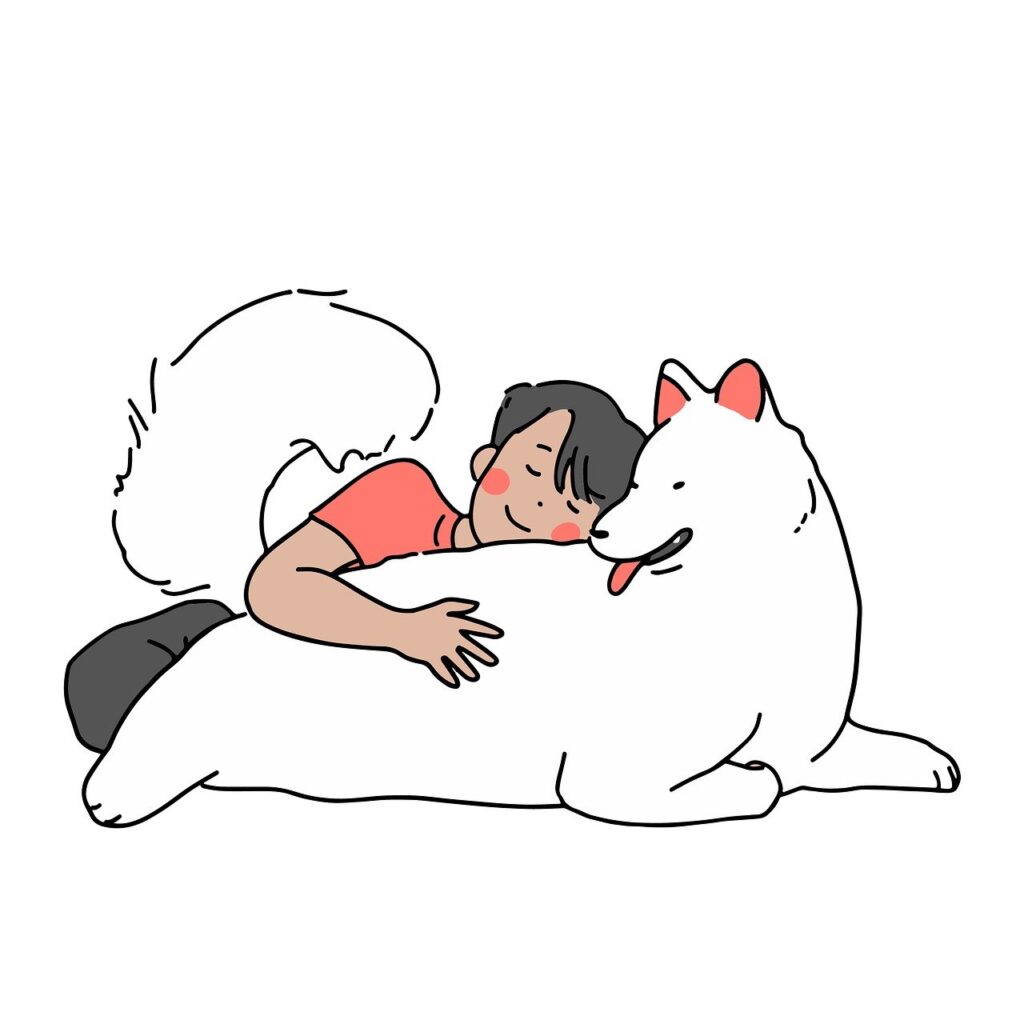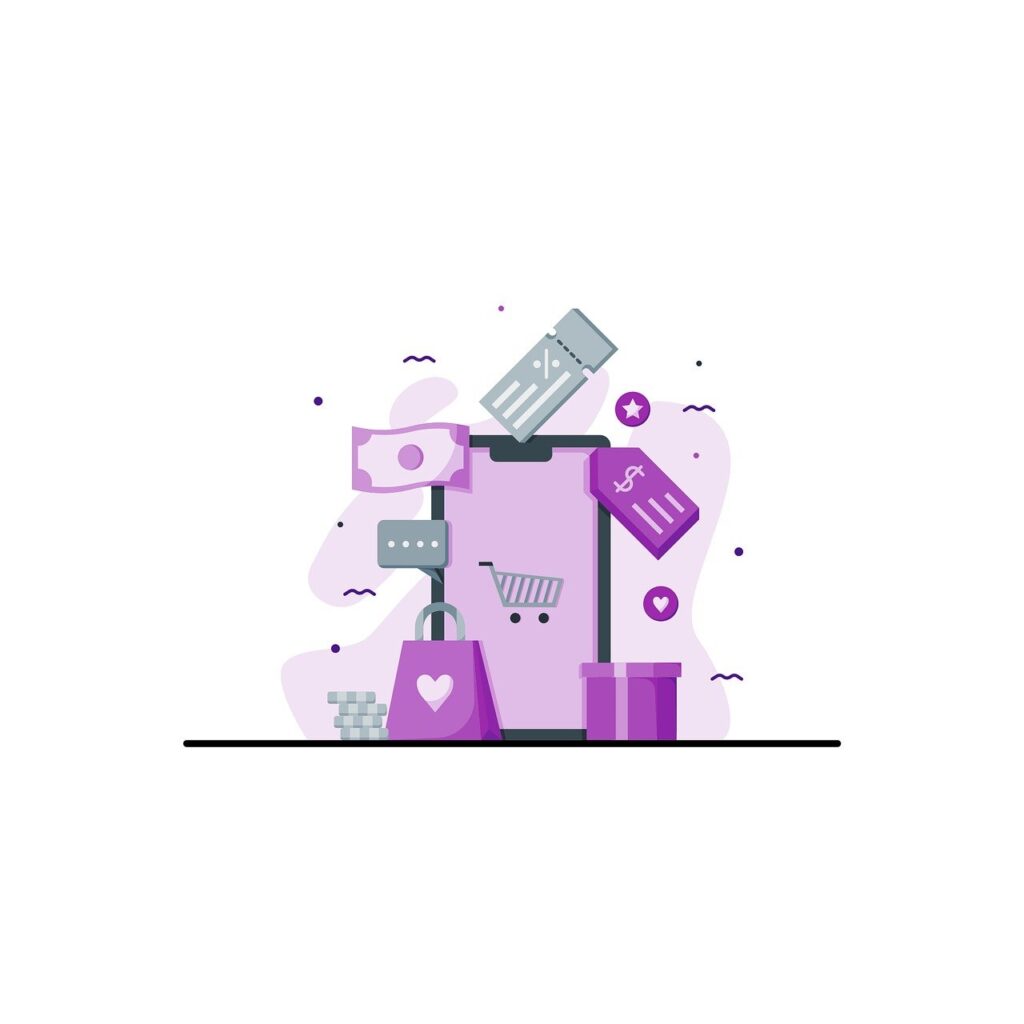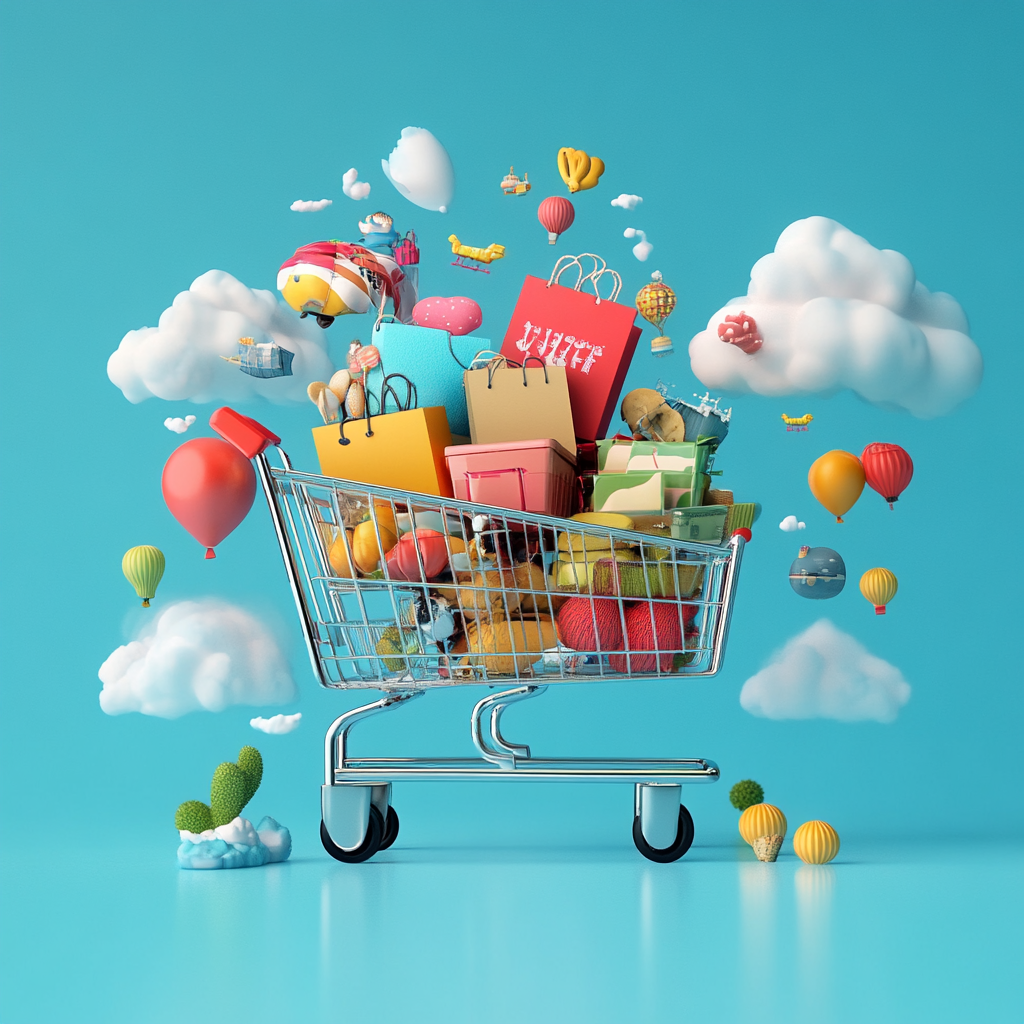Disclosure:
Some of the links on this website are affiliate links, which means that if you click on one of the links and sign up or make a purchase, we may earn a small commission at no additional cost to you. This commission helps support the maintenance and operation of this site.
We only recommend products or services that we believe will provide value to our readers. Our opinions and recommendations are based on our own research and experiences, and we strive to offer honest and unbiased content.
Please note that your support through these affiliate links is greatly appreciated, as it helps us continue to provide quality content and resources.
Thank you for your support!
A Guide
Print-on-demand (POD) is a business model that allows you to sell custom-designed products without holding inventory or managing fulfillment. With POD, you design products like t-shirts, mugs, phone cases, and more, and a third-party provider handles printing and shipping directly to your customers. This model minimizes upfront costs and operational complexities, making it an attractive option for aspiring entrepreneurs and creatives alike.
Platforms to Get Started
To start a print-on-demand business, you’ll need to choose a platform that integrates with your preferred e-commerce or marketplace site. Here are some popular POD platforms:
- Printful: Printful offers a wide range of products, from apparel to home decor, and integrates seamlessly with major e-commerce platforms like Shopify, WooCommerce (WordPress), and marketplaces like Etsy. It provides high-quality printing and fulfillment services, along with design tools and branding options.
- Printify: Printify also provides a broad selection of products and integrates with platforms like Shopify, WooCommerce, Etsy, and more. It boasts a large network of printing partners, which can offer competitive pricing and diverse product options. Printify’s user-friendly interface and integration capabilities make it a popular choice for POD entrepreneurs.
Potential Profit Margins
Profit margins in the print-on-demand business can vary based on several factors, including product costs, design complexity, and pricing strategies. Typically, POD businesses earn between 20% to 50% profit margins on products. Here’s a general breakdown:
- Product Cost: The price you pay for the POD service, which includes printing and shipping.
- Retail Price: The price at which you sell the product to customers.
- Additional Costs: Consider fees for your e-commerce platform, transaction fees, and marketing expenses.
To maximize profit margins, focus on optimizing your pricing strategy, sourcing high-quality products at competitive rates, and minimizing additional costs.
Pros and Cons of Print-On-Demand
Pros:
- Low Upfront Costs: You don’t need to invest in inventory or purchase large quantities of products. This reduces financial risk and allows you to start with minimal capital.
- No Inventory Management: POD eliminates the need for warehousing and managing physical stock. Your POD provider handles all aspects of printing, packing, and shipping.
- Customization and Personalization: Offer unique and custom-designed products without worrying about production limitations. You can create a wide range of designs and cater to various customer preferences.
- Scalability: Easily scale your business by adding new products or designs. The POD model allows you to focus on marketing and design.
Cons:
- Lower Profit Margins: Compared to traditional retail, POD businesses often face lower profit margins due to the higher cost per unit and fees associated with POD services.
- Quality Control: Since you don’t handle the products yourself, you rely on the POD provider to maintain product quality and consistency. Ordering samples before listing products can help mitigate quality issues.
- Shipping Times: POD providers handle shipping, but delivery times can vary based on the provider’s location and shipping method. Longer shipping times can affect customer satisfaction.
- Limited Control Over Fulfillment: You have less control over the production and shipping process, which can lead to delays or errors that impact your business and customer experience.
Starting a print-on-demand business offers an accessible way to enter the e-commerce space with minimal upfront investment. By leveraging platforms like Printful and Printify, and integrating with popular marketplaces and e-commerce platforms, you can create a custom product line and tap into various customer markets. Understanding the potential profit margins and being aware of the pros and cons will help you navigate the POD model effectively and build a successful business.

Types of Products you can Sell:
There are a wide variety of products you can sell through print-on-demand (POD). These products are typically customizable with your unique designs, making them ideal for targeting specific niches or customer interests. Here are some popular types of print-on-demand products:
1. Apparel
Apparel is one of the most popular categories for POD. You can create and sell custom clothing featuring your own designs, graphics, or slogans. Popular options include:
- T-shirts (classic, V-neck, long sleeve)
- Hoodies and sweatshirts
- Tank tops
- Leggings
- Jackets and outerwear
- Baby clothes
2. Accessories
Accessories offer a wide range of customizable products that are affordable and easy to design:
- Hats (snapbacks, beanies, caps)
- Bags (tote bags, backpacks, drawstring bags)
- Socks
- Scarves and bandanas
3. Home Decor
Home decor items are another popular POD category, with a broad appeal to customers looking to personalize their living spaces:
- Posters and prints
- Canvas art
- Throw pillows
- Blankets and tapestries
- Wall clocks

4. Mugs and Drinkware
Custom drinkware, especially mugs, is a favorite for both consumers and businesses:
- Mugs (ceramic, travel, or color-changing mugs)
- Water bottles
- Tumblers
- Wine glasses
5. Phone Cases
Phone cases are high-demand products and provide ample space for creative designs. You can offer custom designs for:
- iPhone cases
- Android phone cases
- Tablet and laptop sleeves
6. Stationery and Office Supplies
Print-on-demand allows for customized office and stationery products, perfect for students or professionals:
- Notebooks and journals
- Planners
- Stickers
- Calendars
- Mouse pads
7. Wall Art and Posters
Custom-designed wall art is popular for home decor, making it an easy sell for POD businesses:
- Framed posters
- Unframed prints
- Canvas prints
- Metal or acrylic wall art
8. Footwear
Some POD services offer custom footwear, allowing you to create unique shoes:
- Sneakers
- Flip-flops
- Slippers
9. Jewelry
Jewelry with custom engravings or designs can be another profitable POD product:
- Custom necklaces
- Bracelets
- Rings

10. Pet Products
With pet owners eager to pamper their furry friends, pet-related products are a niche with growing demand:
- Pet clothing (shirts, bandanas)
- Pet accessories (collars, bowls)
- Pet beds
11. Fitness Gear
With fitness on the rise, there’s a market for custom fitness products:
- Yoga mats
- Gym bags
- Water bottles
- Fitness towels
12. Eco-Friendly Products
Eco-conscious consumers are increasingly looking for sustainable products:
- Reusable shopping bags
- Bamboo or recycled material products
- Eco-friendly water bottles
13. Baby and Kids Products
Parents often seek out personalized or unique items for their children:
- Baby onesies
- Children’s clothing
- Custom plush toys
14. Personal Care Products
Some POD platforms even offer options for personal care items:
- Custom towels
- Bath mats
15. Digital Products
Although not physical products, some POD platforms also allow you to sell digital designs for download, including:
- Printable wall art
- Digital planners
- Printable calendars
By choosing products that resonate with your target audience and applying unique designs, you can create a variety of offerings in your print-on-demand store. Diversifying your product selection can also help you test what works best with your market while keeping inventory risks low.

How to Start a Print-On-Demand Business: A Step-by-Step Guide
Starting a print-on-demand (POD) business can be a rewarding venture, offering flexibility and low financial risk. Here’s a comprehensive guide to help you launch your own POD business from scratch.
1. Understand the Print-On-Demand Model
Print-on-demand is a retail fulfillment model where products are only printed and shipped after a customer places an order. This eliminates the need for inventory and upfront product costs. As a POD entrepreneur, you’ll design products, set up an online store, and partner with a POD provider who handles production and shipping.
2. Choose Your Niche
- Identify Your Market: Research and select a niche that aligns with your interests and has a demand. This could be based on hobbies, trends, or specific customer interests.
- Analyze Competitors: Evaluate existing POD businesses in your chosen niche. Look at their product offerings, pricing strategies, and marketing tactics to identify gaps and opportunities.
3. Design Your Products
- Create Unique Designs: Develop eye-catching and original designs for your products. You can use graphic design tools like Adobe Illustrator, Canva, or hire a professional designer if needed.
- Design for Your Target Audience: Tailor your designs to resonate with your target market. Consider their preferences, interests, and trends to create designs that appeal to them.
4. Choose a Print-On-Demand Platform
Select a POD platform that suits your business needs. Two popular options are:
- Printful: Offers a wide range of products and integrates with major e-commerce platforms like Shopify, WooCommerce (WordPress), and marketplaces like Etsy. Known for high-quality printing and fulfillment services.
- Printify: Provides a diverse selection of products and integrates with Shopify, WooCommerce, Etsy, and other platforms. It features a large network of printing partners, offering competitive pricing and various product options.
5. Set Up Your Online Store
- Select an E-Commerce Platform: Choose a platform to host your store, such as Shopify or WooCommerce. These platforms integrate with POD services and offer customizable templates and features to create a professional online store.
- Integrate Your POD Provider: Connect your chosen POD platform to your e-commerce store. This integration will automate order processing, printing, and shipping.
- Customize Your Store: Design your store to reflect your brand. Create a user-friendly interface, add product descriptions, and set up payment gateways to facilitate transactions.
6. Set Pricing and Profit Margins
- Calculate Costs: Determine the cost of each product, including printing, shipping, and platform fees. Factor in these costs when setting your retail prices.
- Set Competitive Prices: Price your products competitively while ensuring a healthy profit margin. Consider the cost of goods sold (COGS), platform fees, and marketing expenses.
- Offer Promotions: Consider offering discounts or promotions to attract customers and boost sales.
7. Market Your Products
- Leverage Social Media: Use platforms like Instagram, Facebook, Tiktokand Pinterest to promote your products. Create engaging content, run targeted ads, and collaborate with influencers to increase visibility.
- Content Marketing: Start a blog or create valuable content related to your niche. This can drive organic traffic to your store and establish your brand as an authority in the market.
- Email Marketing: Build an email list and send newsletters or promotional offers to keep customers engaged and encourage repeat purchases.
8. Manage Orders and Customer Service
- Monitor Orders: Keep track of order fulfillment and shipping through your POD provider’s dashboard. Address any issues or delays promptly to ensure customer satisfaction.
- Provide Excellent Customer Service: Respond to customer inquiries and concerns quickly. Address returns or refunds according to your store’s policies and maintain a positive customer experience.
9. Analyze and Optimize
- Track Performance: Use analytics tools to monitor key metrics such as sales, traffic, and conversion rates. Analyze this data to understand customer behavior and product performance.
- Optimize Your Store: Continuously refine your product offerings, marketing strategies, and store design based on performance data and customer feedback. Experiment with new designs and promotional tactics to improve results.
10. Stay Informed and Adapt
- Follow Industry Trends: Stay updated on trends and changes in the POD industry. Adapt your strategies to incorporate new technologies or shifts in consumer preferences.
- Innovate and Expand: Explore new product ideas, expand your product range, and experiment with different marketing approaches to grow your business.
Starting a print-on-demand store offers an exciting and accessible way to launch an e-commerce business with minimal upfront investment and operational complexity. By leveraging the POD model, you can focus on designing unique products and building your brand while a third-party provider handles printing, inventory, and shipping.
To set up a successful POD business, begin by choosing a niche that aligns with your interests and target market. Develop original designs that resonate with your audience, and select a reliable POD platform like Printful or Printify that integrates seamlessly with your chosen e-commerce or marketplace site. Carefully manage your pricing strategy to ensure profitability while keeping your products competitive.
Marketing plays a crucial role in driving traffic and sales to your store. Utilize social media, content marketing, and email campaigns to engage with potential customers and build brand awareness. Providing excellent customer service and continuously optimizing your store based on performance data will help you maintain a positive reputation and foster customer loyalty.
As you grow your print-on-demand business, stay informed about industry trends and be open to innovation. Explore new product ideas, refine your marketing strategies, and adapt to changing market demands to stay ahead of the competition. With dedication and strategic planning, you can turn your POD store into a thriving and profitable venture, reaching a global audience and making your mark in the e-commerce world.
FAQ: Starting a Print-On-Demand Store
1. What is a print-on-demand (POD) business?
A print-on-demand business allows you to sell custom-designed products like apparel, mugs, and phone cases without holding inventory. When a customer places an order, your POD provider prints the product and ships it directly to them, handling fulfillment and logistics.
2. How much does it cost to start a POD business?
Starting a POD business requires minimal upfront costs. You typically only pay for your website (if needed), design tools, and marketing efforts. The cost of products is deducted once a sale is made. Many POD platforms like Printful and Printify are free to join but may charge transaction fees.
3. What platforms can I use to set up my print-on-demand store?
You can use popular POD platforms like Printful and Printify, which integrate with e-commerce platforms like Shopify, WooCommerce (WordPress), and marketplaces like Etsy. These platforms help you automate the fulfillment process by connecting with POD providers.
4. How do I choose a niche for my POD store?
Choose a niche based on your interests and market demand. Research trends and competitor products to identify opportunities. A focused niche can help you create targeted designs and appeal to a specific customer base, increasing your chances of success.
5. What kind of products can I sell with print-on-demand?
You can sell a wide variety of products, including t-shirts, hoodies, mugs, phone cases, home decor, tote bags, and more. The selection of products depends on your POD provider, but most platforms offer a broad range to choose from.
6. How do I design products for my POD store?
You can design products using graphic design software like Adobe Illustrator, Canva, or even the built-in design tools offered by POD platforms like Printful. If you’re not a designer, you can hire freelance designers to create custom artwork for you.
7. What are the profit margins in a print-on-demand business?
Profit margins in POD typically range from 20% to 50%, depending on product costs, pricing strategies, and fees. You can calculate your profit margin by subtracting the POD service cost and fees from the retail price of each product.
8. How do I market my print-on-demand store?
You can market your store through social media platforms like Instagram, Facebook, and Pinterest, leveraging organic posts and paid advertising. Content marketing, such as starting a blog or creating product-related videos, can drive traffic to your store. Email marketing is another effective way to engage with customers and promote sales.
9. How can I ensure the quality of my POD products?
Order samples from your POD provider before listing products in your store to verify quality, print accuracy, and shipping times. Regularly checking the quality of products ensures your customers receive the best possible experience, helping you build trust and retain buyers.
10. What are the pros and cons of a print-on-demand business?
Pros:
- Low upfront costs and no need for inventory.
- A wide range of customizable products to offer.
- No inventory management—POD providers handle printing and shipping.
- Easy to scale by adding new designs and products.
Cons:
- Lower profit margins compared to traditional retail.
- Limited control over fulfillment and shipping.
- Quality and shipping times depend on the POD provider.
- High competition in popular POD niches.
11. How long does it take to get started with a POD store?
Setting up a POD store can take anywhere from a few days to a couple of weeks, depending on the complexity of your product designs, the platform setup, and any customization you need. Once your store is live, you can start selling right away.
12. How do I handle customer service in a POD business?
Even though your POD provider handles fulfillment, you are responsible for customer service. This includes answering customer questions, handling returns or exchanges, and resolving any issues related to orders. Make sure to have clear policies in place and respond promptly to customer inquiries.
13. Is print-on-demand a good business for beginners?
Yes, print-on-demand is a great business for beginners because it requires low initial investment, and you don’t have to worry about inventory or shipping logistics. It also allows you to experiment with different designs and product ideas with minimal risk.
Starting a print-on-demand business can be a profitable and scalable venture. By focusing on the right niche, choosing a reliable platform, and consistently marketing your products, you can build a successful online store.
For more from the blog on Print-On-Demand, click here.





Leave a Reply